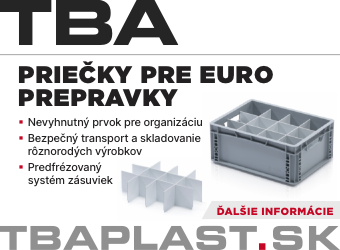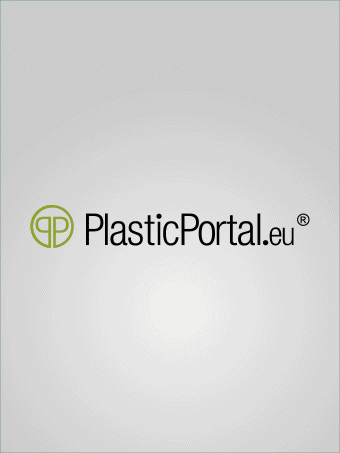Finding suitable materials for 3D printing with VELOX CMS
Recent growth of additive manufacturing has been dramatic and it is quickly approaching mainstream adoption. Today, a wide variety of materials can be 3D printed using many platform technologies to build a large diversity of products and functional components for industrial usage. For plastic materials in particular, the transition from rapid prototyping to high volume production of functional parts means access to the right materials is critical.
Here, Manuel Delgado, Market Manager 3D Printing at raw material specialties distributor VELOX, outlines some of the new speciality raw materials available for the development of filaments and powders. The transition to functional part production is highly dependent on finding materials that not deliver only the necessary design accuracy but also the physical and mechanical properties essential for the application. In some areas, such as the aerospace and automotive sectors, additive manufacturing is mainstream. In others, such as the medical, healthcare, and food and packaging industries, the take-up to manufacture end-use parts has been glacial.
One of the main reasons for this is that many regulatory guidelines and standards preclude their use. Depending on whether the printed parts end up as a machine component, a cog wheel for example, or an elaborate food container different rules apply. In Europe, materials that come into direct contact with food need to be certificated to EU regulation 10/2011. For global use, they also need to be FDA-compliant.
Another, more prosaic, reason for the slow uptake of additive manufacturing in the food and medical industry is the surface finish. Both applications require cleanliness and must be sterile; the porous surfaces on a 3D printed part are particularly challenging where interconnectivity between layers takes place. The technique is acceptable for proof of concept but not in real-world applications. Here, parts need to be cleaned regularly with chemical and steam cleaners.
For Fused Deposition Modelling (FDM), also referred to generically as Fused Filament Fabrication (FFF), the two most common materials used are Acrylonitrile Butadiene Styrene (ABS) and Polylactic Acid (PLA). Both are thermoplastics, which when heated, become malleable allowing them to be moulded into different shapes prior to cooling. ABS is an oil-derived plastic and is commonly used to build strong and sturdy components, such as car parts. PLA, on the other hand, is made from organic materials. Its low melting point makes it easier and safer to handle, printed parts are susceptible to warping, cracking or melting.
Generally speaking, neither of these materials are suitable for use in the aforementioned heavily-regulated sectors, until now. As an established and independent distributor serving industries as diverse as healthcare, food processing and automotive, VELOX offers one of the broadest portfolios of raw plastic materials, from base polymers to additives. Specialist suppliers include SK Chemicals, Trinseo, Lubrizol and Carlfors Bruk – they produce raw materials that are FDA-compliant or medically certified, or have special characteristics, some of which are also well-suited for additive manufacturing.
With MAGNUM ABS, Trinseo offers a material that has undergone biocompatibility testing according to the ISO 10993 standard and is therefore medically-approved. This material also creates an excellent glossy appearance and good impact performance of the printed part, both characteristics that match the needs of the medical device sector. Another of Trinseo´s materials features excellent stability in high temperatures, non-halogenated ignition resistance and suitability in corrosive chemical environments. These are ideal characteristics for parts that require regular steam sterilisation or chemical washdowns. For PLA materials, one of the newly developed Skyplete grades by SK Chemicals has a heat resistance of up to 100 degC, post-annealing.
In addition to these known chemistries, VELOX also offers other materials suitable for 3D printing. These include bio-based co-polyesters, Polyethylene Terephthalate Glycol (PETG by SK Chemicals), Thermoplastic Polyurethanes and Elastomers (TPU/TPE by Lubrizol and SK Chemicals) and other engineering compounds. Each material offers special characteristics for most industries such as flexibility, stiffness, low moisture absorption, excellent mechanical properties, chemical resistance or high transparency.
A new material which is revolutionising the industry is PEEK, a PolyEther Ether Ketone. It is a semi-crystalline, thermoplastic polymeric material that is resistant to many corrosive chemicals. Its excellent mechanical properties, such as high wear resistance, and stability in high temperatures make it highly desirable for industrial applications. VELOX has introduced PrimeTec® PEEK 20G, and is sampling this material for comparison testing with filament manufacturers. Initial results for its widespread industrial potential are promising.
Turning our focus to powdered materials for Selective Laser Sintering (SLS), VELOX has selected within its portfolio a number of atomised powders and additives that offer further potential. Atomised aluminium powder, produced by Calfors Bruk, can be added into the mix to give an increased heat resistance to SLS powders, and increasing conductivity. This aluminium powder can also give a metallic effect to the printed part.
To increase the hardness and toughness of SLS printed parts, solid glass beads can be added; these are made by Potters. They have the potential to lower resin demand during printing for higher volume loading. The low-density hollow glass beads can also reduce the overall weight of the part. An additional benefit of using glass beads as a filler is that the thermal stability of the material is increased significantly, which makes printed parts suitable for use in high temperature environments.
Another interesting and exciting filler is milled carbon fibre from Zoltek. This material, called Panex PX30MF, gives antistatic properties to the printed part and a good conductivity, along with an improvement in mechanical resistance.
In addition to its wide European footprint and qualified sales and marketing service, VELOX offers filament and SLS powder manufacturers a wealth of material and technical expertise. With its first-class suppliers from around the world, the new VELOX specialist additive manufacturing division offers materials to fit almost all FDM/FFF and SLS printing needs.
- autor:
- Manuel Delgado, manažer pro trh 3D tisku společnosti VELOX GmbH





















